Content
Large, glossy apples sold in stores are repulsive with their appearance, taste, and price. It's good if you have your own garden. It’s nice to treat your loved ones with aromatic, delicious apples from the cellar on a cold winter day. If you know how to store apples in the cellar, they can remain fragrant and juicy until the next season.
Winter ones are best stored apple varieties. They have a thicker peel, which protects the fruit from drying out and the penetration of pathogens. The top of the fruit is covered with a matte coating that preserves its freshness, so there is no need to remove it.
Collection rules
Long-term storage of apples in the cellar requires careful preparatory measures, which begin with proper picking:
- before you start collecting, you need to collect those that are lying around the tree and put them in a separate basket - they will not withstand storage;
- even minor damage can lead to spoilage of the fruit, so you need to pick them carefully, turning them around the stalk;
- You need to pick fruits with the stalk, then they will last longer;
- It is better to pick apples for storage with gloves on so as not to wipe off the waxy coating from them;
- the picked fruits are placed in a plastic bucket, previously lined with a soft cloth - it is even better to put them in wicker baskets;
- if the fruit has fallen or been damaged, it must be placed in a separate container, since it will not be stored for long, will begin to rot and will lead to the rotting of others;
- You must first pick apples from the lower branches.
Harvest stages
It is important to harvest on time. If you delay in picking fruits, they will become overripe. If you start picking too early, they won't have time to develop flavor. Winter varieties are harvested slightly unripe and hard.
There are different degrees of fruit ripeness. At the consumer level of ripeness, apples acquire those external characteristics that distinguish this variety - individual color, characteristic aroma, specific taste. The fruits easily fall off the branch and fall to the ground, since the apples have already acquired the necessary supply of nutrients. These include mainly summer varieties that are not stored for a long time. Summer varieties can be harvested in mid-summer.
The second stage of fruit harvesting begins in late summer. At this time, autumn varieties reach removable maturity. They need to sit for another 3-4 weeks to gain their taste. This is a level of maturity when the chemical composition of the fruit allows it to withstand a sufficient shelf life.
The main thing is not to miss the right moment to collect apples for storage. To do this, the starch content in them is determined. If there is a lot of it, then the cut of the fruit will turn blue from the action of iodine. This means that the harvest time has not yet arrived. If the pulp turns yellow-white, the apples need to be quickly picked for storage.
The season for harvesting winter varieties begins in mid-September and continues until October.
Selection of fruits for storage
During storage, apples in the cellar ripen and become juicy and tasty.Apples for storage should be selected of the same size so that they ripen evenly. Each variety should also have its own box, since they have different shelf life.
After harvesting the apples, you need to put the harvest in a cool place for storage for two weeks. Before placing the fruits in boxes, they need to be sorted out and the defective ones separated. Selected apples for winter storage must meet the following requirements:
- they must not have a wormhole;
- there must be no dents or damage;
- the presence of the stalk will prevent the appearance of fungus - there is no need to tear it off;
- no need to wipe the fruits and remove wax deposits;
- Apples for storage should be sorted by size.
Stacking apples for the winter
Boxes for storing apples must be dry, made of strong but soft wood and clean. Sufficient capacity is 20 kg, too much weight will result in excess pressure. Instead of boxes, you can use cardboard boxes that are moisture resistant. If there are only a few apples, you can wrap each one in paper so that they do not touch. With a large volume of fruits, they are often sprinkled with clean and dry sawdust, dry hay or sand, and moss.
It is important to properly place the fruits in the boxes. They should not interfere with each other. You can stack apples for storage in a checkerboard pattern - this option will avoid damage to the stalk. If everything is done correctly, you can store boxes of apples for long-term storage.
Many gardeners prefer to store apples on racks in the cellar instead of boxes. Fruits are placed on them in one row so that they do not touch each other.You can lay two rows, laying them with thick cardboard.
A convenient way to store apples is in plastic bags. One and a half to two kilograms of fruit are packaged in them and placed in the cellar for 6-7 hours so that they cool to cellar temperature. Next, the bags are tied tightly. The concentration of carbon dioxide in the bags gradually increases from the respiration of the fruit and after a week or two becomes sufficient to ensure long-term storage of apples. It can also be pumped into bags in advance using a siphon. A simple way to quickly saturate the bag with carbon dioxide is to put a cotton swab soaked in vinegar or alcohol in it.
Preparing the cellar
Placing apples in a cellar for the winter is an excellent solution, since the cellar has ideal conditions in this regard. To ensure that apples are stored in the cellar for the winter, it should be prepared in advance:
- the room must be disinfected;
- whitewash the walls;
- treat the floors with a solution of copper sulfate;
- you also need to check the waterproofing of walls and floors;
- floors in the cellar or basement do not need to be concreted;
- ensure sufficient ventilation inside the cellar;
- It is advisable to also wipe storage boxes with a solution of soda ash;
- the ceiling height should be about two meters to prevent condensation from accumulating - the optimal humidity should be 85-95%, it can be monitored using a hygrometer;
- room temperature from minus one degree to plus four is the most acceptable for storing apples;
- Approximately once every 10-12 days, apples should be inspected and those fruits that have begun to deteriorate should be removed.
Tips from experienced gardeners
Gardeners with many years of experience can share tips on how to store apples in the cellar for the winter in order to avoid significant harvest losses.
- Boxes with apples for storage are placed in a plastic bag and tied with twine on top. This technique helps preserve moisture in the fruits - they remain juicy for a long time. While allowing carbon dioxide to pass through well, polyethylene inhibits oxygen. As a result, the fruits ripen quickly, but do not dry out and are stored longer - about six months.
- If the humidity level in the room is low, then paper soaked in vegetable oil can be laid between the rows. This measure will prevent the fruit from drying out.
- You cannot store apples in the cellar next to vegetables, as they harm each other. If next door is potato, garlic or onions, apples can absorb the unpleasant smell and starchy taste. And ethylene, which fruits release during storage, accelerates the germination of potatoes and cabbage.
- Often, many gardeners, before placing apples in the cellar for the winter, treat them with ultraviolet light before storage. The bactericidal lamp is installed from the fruit at a distance of up to one and a half meters and turned on for half an hour. This method of disinfection before storing apples can reduce rotting processes.
- Some summer residents prefer to treat fruits with molten wax or wipe with glycerin before storing.
- Sometimes fruits spoil due to being in uncleaned boxes, so it is advisable to steam them to prevent mold from forming.
Other storage methods
There is a convenient way to store apples in the cellar, in which they will remain as juicy and fresh all winter as they were picked from the tree. The fruits placed in plastic bags are tightly tied and placed in a half-meter hole.To repel mice, the bags are lined on all sides with spruce and juniper branches and then covered with earth. The storage location is marked with a stick or other mark.
Fruits are perfectly stored in plastic bags, buried in beds at a depth of about 20 cm. Sticks are tied to the bags tied with rope, indicating the place where the bag should be placed. The top of the bed is covered with earth, tops, and old leaves - the fruits perfectly retain their taste.
Storing apples in the cellar can be done in the following way:
- after harvesting, they are laid out on the floor in the country house and spoiled fruits are discarded within two to three weeks;
- then they are transferred to plastic bags and tied tightly;
- until frost, the packages lie in the country house;
- when the room temperature drops to zero degrees, the bags are moved to a cellar or basement with good ventilation;
- in May, you can remove the fruit from the bags and put it in the refrigerator.
No matter where apples are stored, it is important to provide them with the correct storage conditions. Then the fragrant fruits will decorate the table throughout the winter and delight you with their appetizing appearance and taste.
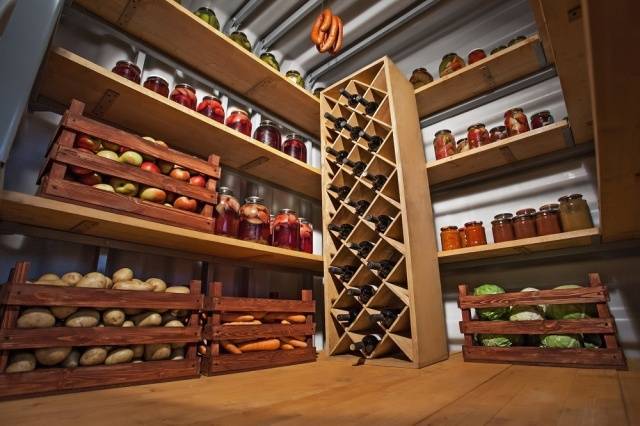
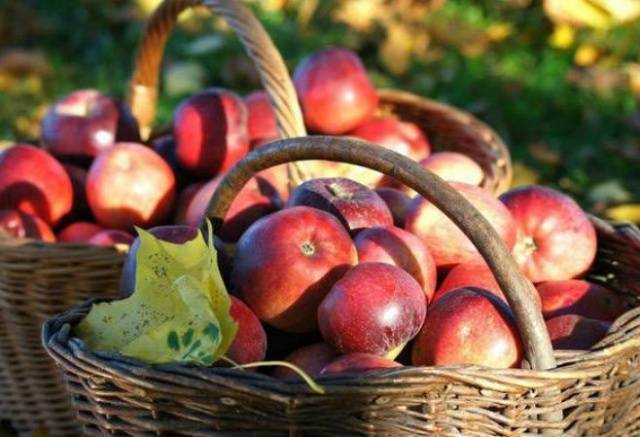
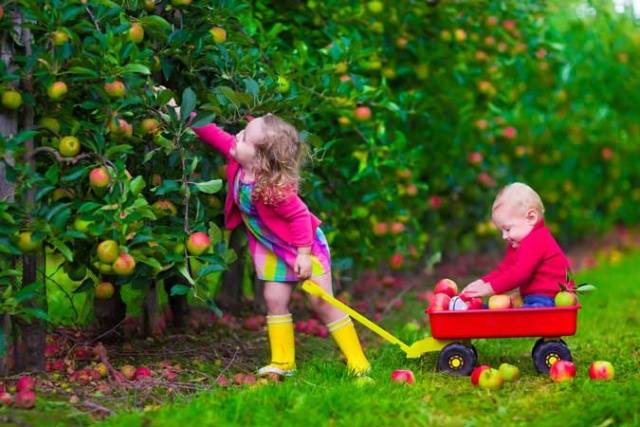
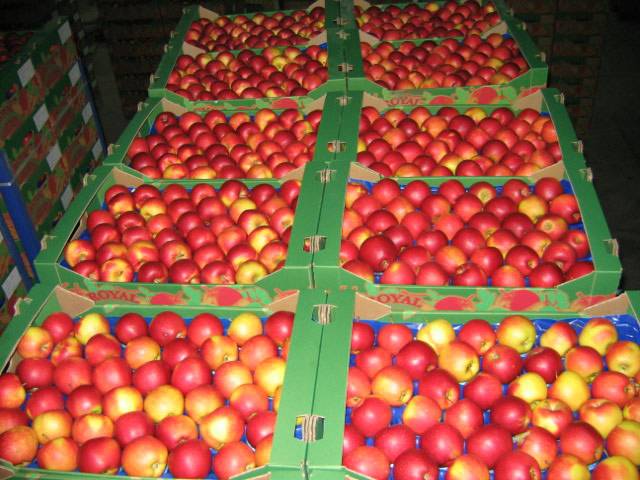
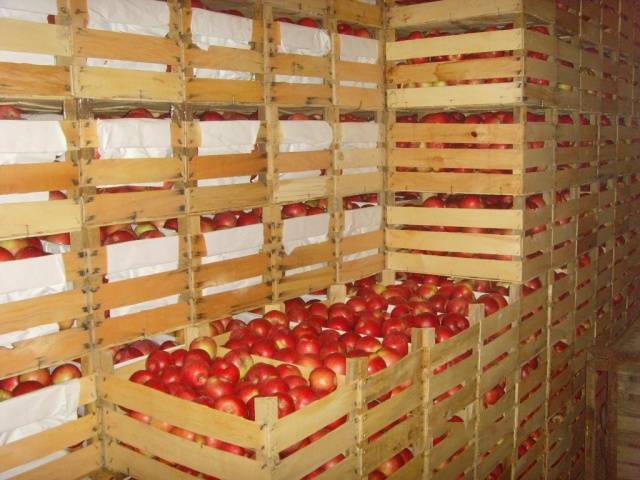
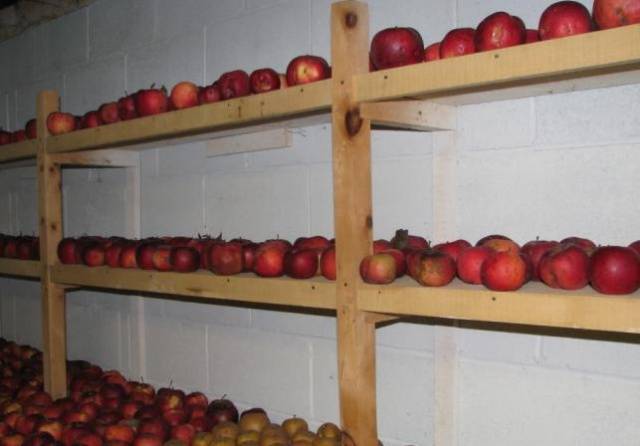
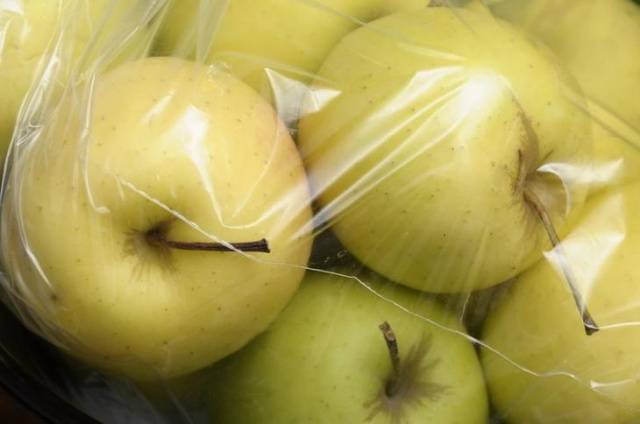
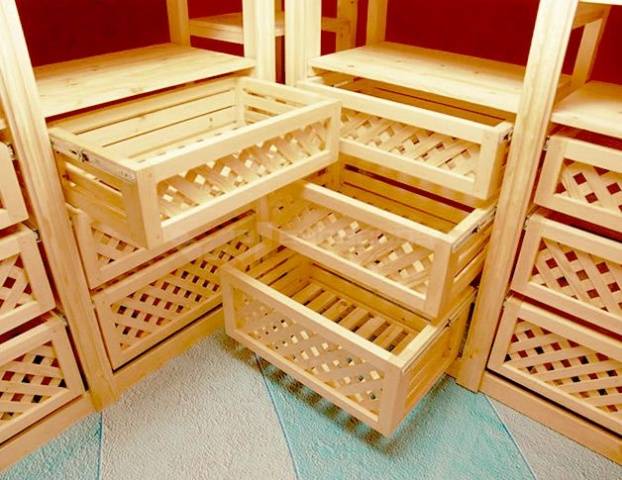
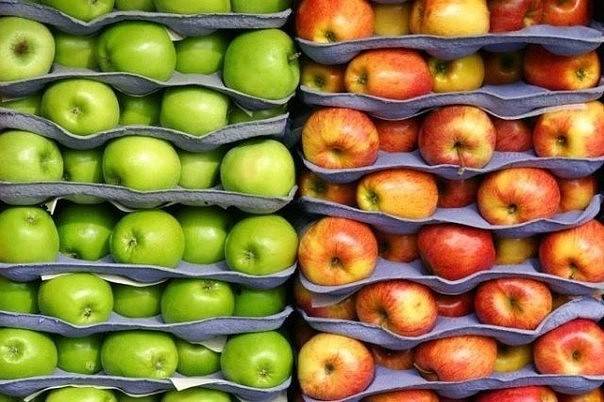
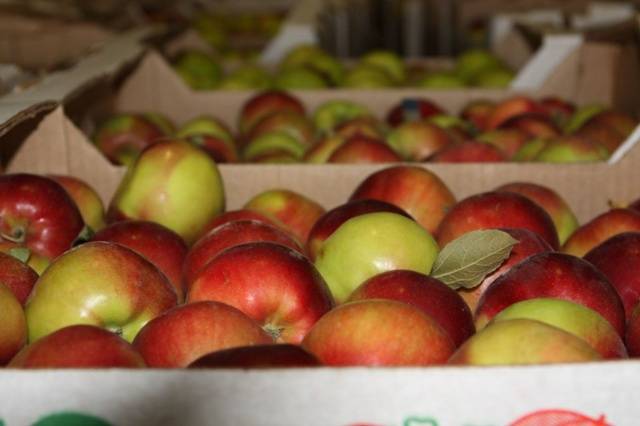
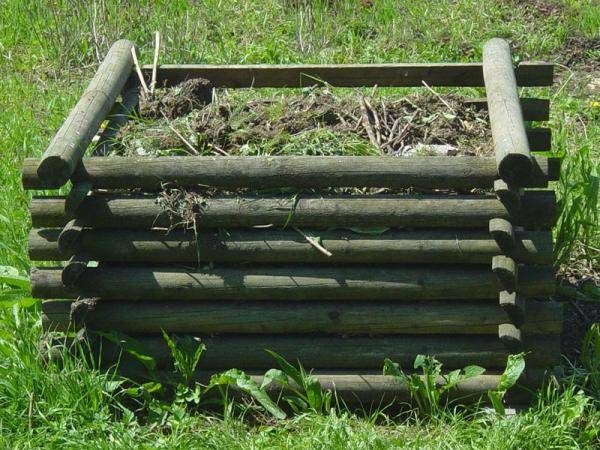
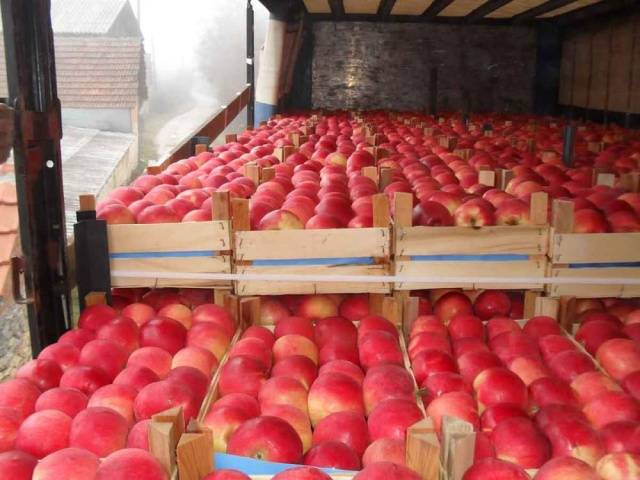
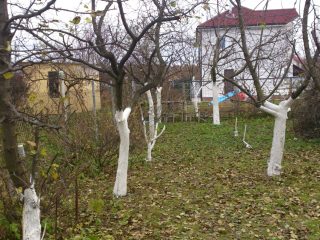
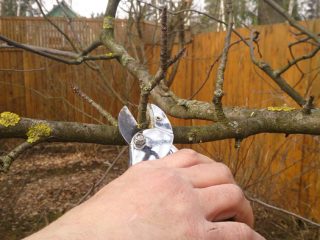
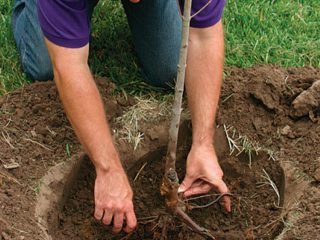
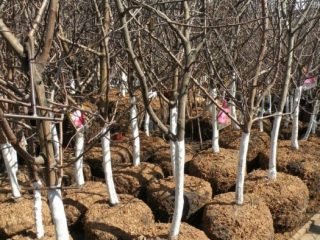
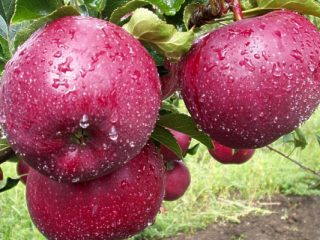
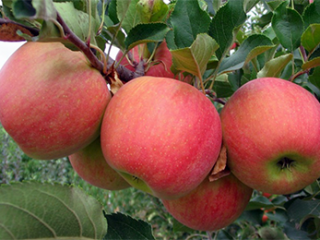



My grandmother worked in a nursery. And she kept the apples in the basement. In April we finished the last apples. But she always wrapped each apple in a piece of newspaper. The apples lay for a long time, did not spoil, and did not absorb foreign odors.And yet, we never stored apples in boxes. This way they spoil faster. Carefully laid out in one layer on the shelves. Maybe someone will find this storage method useful. Sincerely, Elena.
When stored in sawdust, apples acquire a woody smell. If the sawdust is from coniferous trees, then eating apples is not possible.